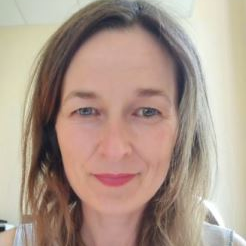Clusters—between Atoms and Nanoparticles
A special issue of Molecules (ISSN 1420-3049). This special issue belongs to the section "Nanochemistry".
Deadline for manuscript submissions: 30 November 2024 | Viewed by 1494
Special Issue Editor
Interests: nanoparticles; nanomaterielas; clusters; metalorganic; complexes; kinetics; catalyst; metal determination; separation
Special Issues, Collections and Topics in MDPI journals
Special Issue Information
Dear Colleagues,
In recent years, alongside metallic nanoparticles, a new trend related to the application of metal clusters has been observed. The growing interest in nanoclusters, and in particular, gold nanoclusters (AuNCs), is related to their unique molecule-like properties and the biocompatibility of AuNCs. The term “cluster” is defined as a small object consisting of several to 100 gold atoms with a total diameter below 2 nm. Contrary to particles with a larger size (>2 nm), AuNCs have no plasmon resonance effect. Moreover, AuNCs can be considered molecules due to the effects of quantum confinement, in which the conduction band is significantly quantized. Gold clusters containing a core size comparable to the Fermi wavelength of an electron, i.e., 5 Å, are characterized by fluorescence. This effect is observed as a result of light being absorbed of a certain energy, which excites electrons and causes them to move to higher energy levels. The consequence of this process is an energy release in the form of light, but with a lower energy than the length of light that causes excitation. Taking this into account, AuNCs absorb light in the wavelength range of 650 to 900 nm (this range is also called a therapeutic window of tissues), and they find application in, for example, cancer diagnostics. Despite the increasing number of publications on this topic, most of them focus on the application of gold nanoclusters in the context of fluorescence properties rather than kinetics and the mechanism of their formation. However, this basic knowledge can help us to comprehend in further detail the process of nanoparticle formation in complex forms, including clusters and small and larger particles.
Taking into account the above-mentioned aspects, this Special Issue welcome papers related to any aspect of metallic clusters, including those addressing the process of their formation, kinetic and mechanism studies, properties, and applications.
Dr. Magdalena Luty-Błocho
Guest Editor
Manuscript Submission Information
Manuscripts should be submitted online at www.mdpi.com by registering and logging in to this website. Once you are registered, click here to go to the submission form. Manuscripts can be submitted until the deadline. All submissions that pass pre-check are peer-reviewed. Accepted papers will be published continuously in the journal (as soon as accepted) and will be listed together on the special issue website. Research articles, review articles as well as short communications are invited. For planned papers, a title and short abstract (about 100 words) can be sent to the Editorial Office for announcement on this website.
Submitted manuscripts should not have been published previously, nor be under consideration for publication elsewhere (except conference proceedings papers). All manuscripts are thoroughly refereed through a single-blind peer-review process. A guide for authors and other relevant information for submission of manuscripts is available on the Instructions for Authors page. Molecules is an international peer-reviewed open access semimonthly journal published by MDPI.
Please visit the Instructions for Authors page before submitting a manuscript. The Article Processing Charge (APC) for publication in this open access journal is 2700 CHF (Swiss Francs). Submitted papers should be well formatted and use good English. Authors may use MDPI's English editing service prior to publication or during author revisions.
Keywords
- metallic clusters
- kinetic
- mechanism of cluster formation
- properties
- applications






